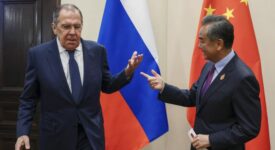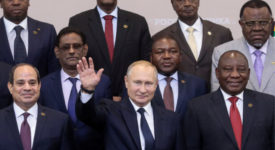Warfare has changed its face. Over the years, Russian military academies have come up with new ways to counter Western approach on how to gain a competitive edge in conflict. New doctrines of engagement are emerging and tactics have altered. Despite of some of these conflicts happening on land, most of them take place at sea, where there are no clear borders. Because of this lack of governance, patchy surveillance and poor security tapestry, actions between naval forces that, on land, would be acts of aggression triggering large scale political and military ramifications, are much more common at sea.
Nevertheless, this new approach to warfare is not dictated by NATO, but by its adversaries. The Alliance simply neglects sea as a domain of competition as it has set its priorities elsewhere. The United States and United Kingdom are trying to push forward some changes, mainly through a technological offset, a wave of innovation, and greater precision. All of these cost money though and NATO’s political leaders each have their own ideas on how they should pursue this new maritime strategy.
The Northern Group thinks that they should prioritize conventional naval forces capable of deterring and countering Russian submarine and capital ship deployments. Many vulnerabilities, such as the connections to North America (both above and under the Atlantic Ocean) and the internal seas within Europe have allowed Russians to rival NATO’s superiority at sea. This led to the establishment of a new Atlantic Command for NATO. Yet, not all members see each other eye to eye on the issue that Russia poses an imminent threat. Some countries on the Mediterranean coastline (specifically Italy, Greece and NATO partner Malta) struggle with more pressing issues, such as migration. This ultimately leads to the maritime strategy being incoherent.
Looking at Russia’s defense budget, we can see that it is quite small compared to NATO’s, which gives the Alliance an advantage on paper, but the Russian Armed Forces are having significantly more success on the battlefield than NATO. It could be argued that this gives Russia a greater political influence and leverage as well from North Africa to the Middle East. Having said that, Russia is currently in the process of rebuilding its naval forces. Its military equipment is evenly matched with that of NATO, but they are more aggressive and ambitious. NATO’s plan of delivering the 100 additional warships (54 major combatants) and submarines (24 new conventional and nuclear hulls) before 2020 will be challenging, but it is a coherent force design that will continue to challenge its naval power for at least the next two decades.
There are three notable aspects of Russian naval force development. First is the continued development of the Russian submarine program, combining autonomous systems with traditional manned platforms. Second is the evolution of Russian missile technology, covering land attack, naval strike, cruise and short-range ballistic systems capable of overwhelming or defeating Western defenses. The third one is that the Russian forces are not simply investing in new capabilities and technology. Instead they seek out opportunities in combining technologies with high political will, an ability to act unpredictably and to outsmart NATO.
Russia acting outside Western rules of engagement (legally, ethically and morally) constitutes a distinct challenge for political and military commanders in NATO. By exercising hybrid, grey zone or threshold approaches to activities short of conflict, Russia has seized the initiative on land, and continues with this strategy on sea. As a response, NATO has increased its focus on the maritime domain. NATO’s Defense Ministers agreed last November to reinforce its maritime posture, but these actions alone are not enough, nor do they address the Alliance presumption that more information equals success.
All in all, it would require something much more to match the highly complex strategy that Russia has used. A change of tactics or an alteration of the command structure might be good starting points. In the end, there is no one area in which Russia is outperforming NATO but the former’s approach in combining technology, ways of fighting, platforms, weapons, sensors alongside an aggressive political will to act will make Russia a challenging adversary in the foreseeable future.
‘Will the Alliance Discover Navies Again?’ – Analysis by Peter Roberts – NATO Review Magazine.







